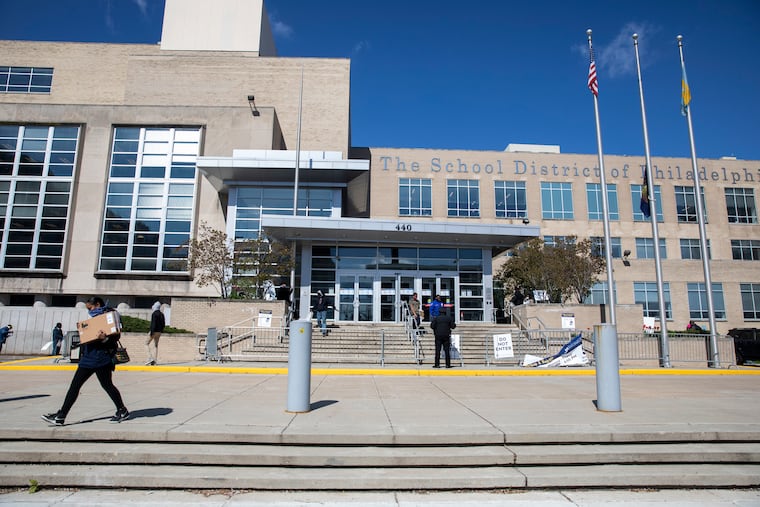Who’s showing up for school during the pandemic? In Philly, it’s just over half of students.
In the Philadelphia School District’s first week of graded, teacher-led instruction, 57% of students participated in school remotely, officials said. Average daily attendance in the 2018-19 school year was 92%.

In the Philadelphia School District’s first week of graded teacher-led instruction since schools were shut down in March by the pandemic, 57% of students participated in school remotely, officials said Thursday.
At the elementary-school level for the week of May 4, fewer than half of students logged on, completed paper packets, or otherwise showed evidence of participation — 48% of students in K-8 schools were marked present. In middle and high schools, the figure was 73% of students participating.
An analysis of district data show that for the 2018-19 school year, for all schools, average daily attendance was 92%.
District chief of staff Naomi Wyatt, who presented the pandemic participation data at a school board committee hearing Thursday night, said she did not believe the numbers were a full reflection of student efforts. In some cases, students making contact with school staffers other than their teachers were not captured, Wyatt said.
“It’s important to note that this is early participation data. It’s not fully representative of student participation,” said Wyatt. She said the process is new, and teachers and staff are still learning.
» READ MORE: When coronavirus hit, schools moved online. Some students didn’t.
Participation is not limited to online logons. Students or their parents can register participation by text, phone call, sending photos of work, or entering Google Classroom, the district’s preferred online portal.
Overall, 83,742 of the district’s roughly 125,000 students — 64% — received free loaner Chromebooks to help them complete schoolwork online, but some families still lack internet access. And the district has been unable to locate about 1,500 children despite efforts by school staff.
At the middle and high school levels, students can mark themselves present via Classroom. Teachers are responsible for all participation marks for students in K-8 schools, and that likely factored into the lower elementary numbers, Wyatt said.
But elementary school students, particularly the youngest, often require not just parent supervision to complete their work, but often parent instruction. If parents are working inside the home or outside of it, juggling multiple children, or have other responsibilities, that’s a tough equation to solve, board member Julia Danzy noted.
“They really are dependent upon the parent,” Danzy said of young elementary school children.
» READ MORE: Schools brace for budget cuts as the coronavirus wreaks havoc on the economy
Board President Joyce Wilkerson asked Wyatt how the district will figure out whether students are learning anything.
“This is all very new," Wyatt said. "The first challenge now is making sure students have the supplies, that they’re participating, and as we get deeper into instruction, making sure that the instruction’s rigorous and that students are assessed.”
Wyatt said she expected the process to smooth out, but the window for improvement is small.
Because of technology gaps and the need to pivot instruction that had generally not incorporated extensive amounts of distance-learning elements, Philadelphia students went 53 days between the last day of in-person learning and the first day of teachers presenting new content.
The school year ends for students on June 12, and grades go in the week before. And even for in-person instruction, attendance typically plummets after Memorial Day.
Superintendent William R. Hite Jr., in a Thursday news conference, said there’s no doubt that students will behind in September. Instruction that’s occurring now is designed to lessen that regression, Hite said.
“Those children are not going to be where they would normally be, given the fact that we have been out of school so long,” said Hite. He said the district was planning for schools to open for in-person instruction in September, if public health agency guidance permits it, and that once they do, adjustments must be made.
“We are planning once children are back in school and once we do some of the managing trauma and reestablishing communities, we do plan to do some kind of assessment for every child,” the superintendent said.
The Philadelphia Inquirer is one of more than 20 news organizations producing Broke in Philly, a collaborative reporting project on solutions to poverty and the city’s push toward economic justice. See all of our reporting at brokeinphilly.org.